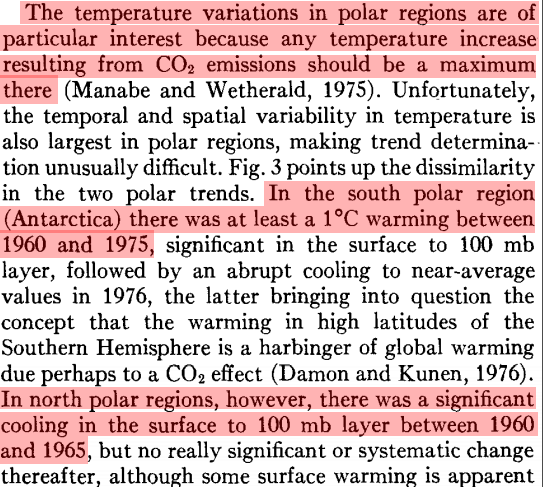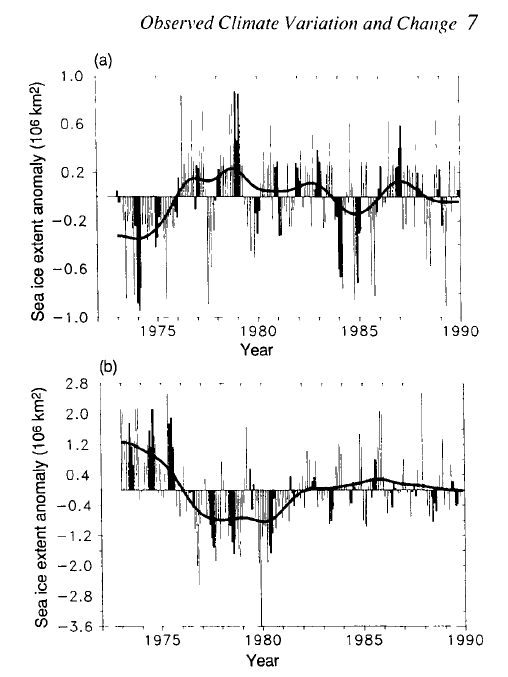In 1978, scientists saw warming in the Antarctic and cooling in the Arctic, and wanted to blame it on global warming.
journals.ametsoc.org/doi/pdf/10.1175/1520-0493(1978)106<0755%3AGTVSMA>2.0.CO%3B2
The 1990 IPCC report showed that Antarctic was decreasing while Arctic ice was increasing during that period.
Now they see the exact opposite (Arctic ice decreasing and Antarctic ice increasing) and want to blame it on global warming. Instead of behaving like actual scientists and looking at the big picture, climate scientists cherry pick whatever parts of globe appear to be agreeing with their agenda at the time.




Antarctic glacier ‘melted JUST as fast LONG before human carbon emissions’ http://www.theregister.co.uk/2014/02/21/antarctic_glacier_melted_just_as_fast_long_before_human_carbon_emissions/
GEE, Isn’t that the Bipolar Seesaw?
What is the latest on the Bipolar Seesaw?
Can we predict the duration of an interglacial? — September 2012
That paper goes on to say:
OOPS /Snark
The solar magnetic activity/cosmic ray theory of climate says that with few sunspots/lower magnetic field strength, more cosmic rays reach the lower atmosphere, creating more cloud condensation nuclei and more clouds. The clouds reflect solar radiation, and the world gets cooler, except for Antarctica, where more clouds reflect heat downward, from the land surface which itself reflects solar heat back to space. In the Arctic, the open water absorbs solar radiation, so fewer clouds make it warmer, and more clouds means colder, the opposite of the Antarctic. We now have few sunspots, and the earth is cooling. The Antarctic should start a warming trend soon.